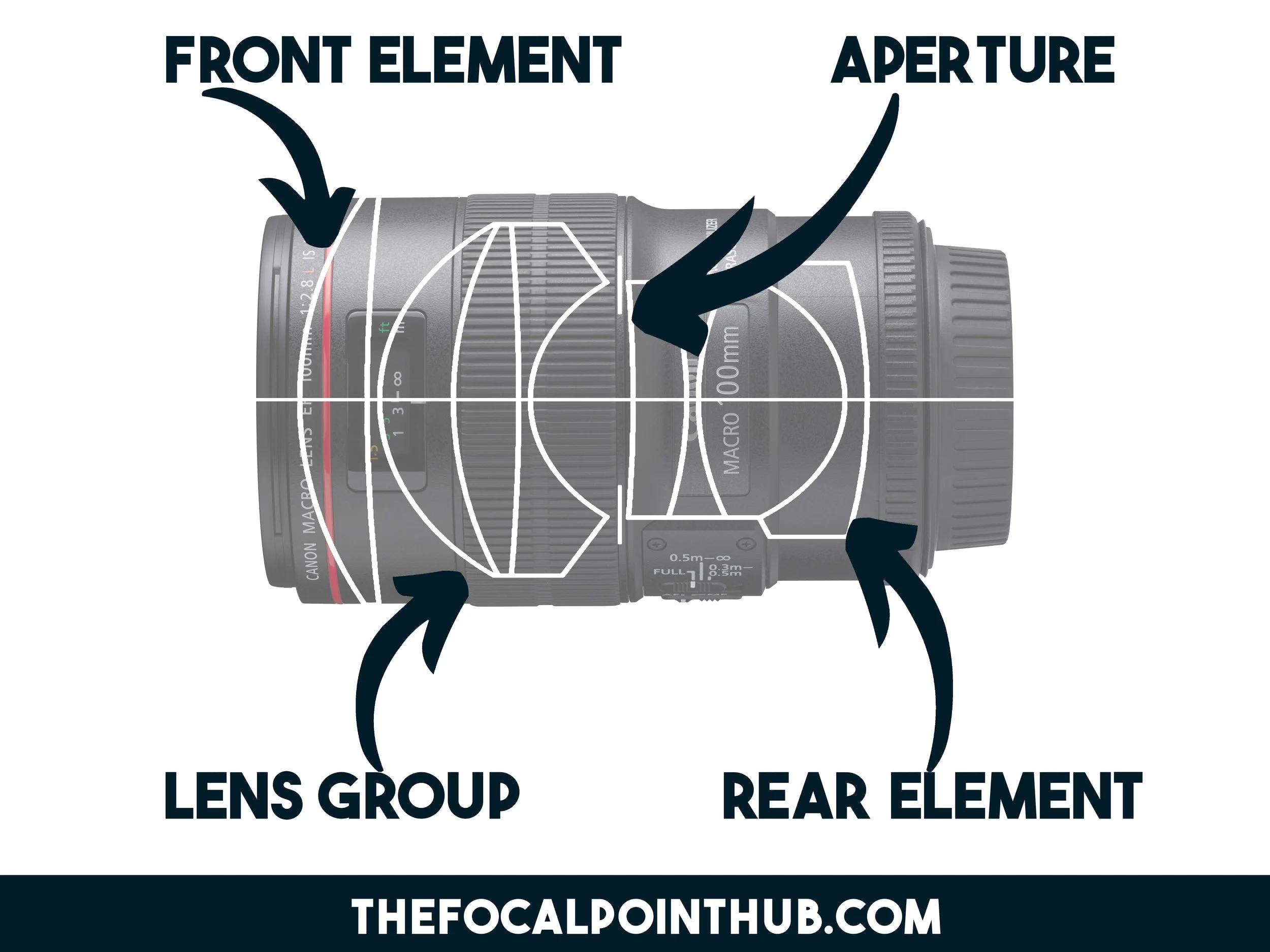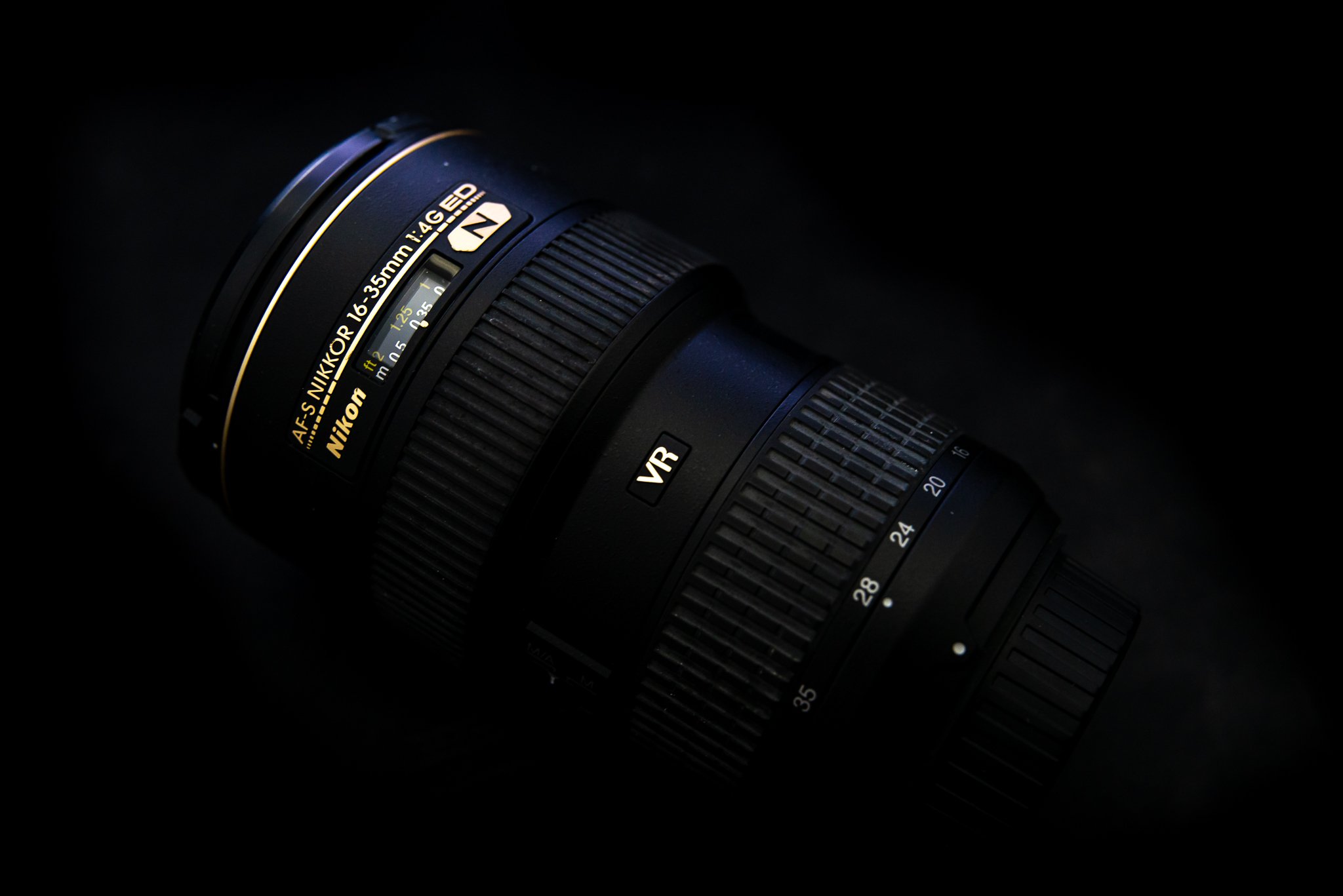Introduction to Lenses
In your gear-buying research, you may have seen the idea that lenses are more important than the actual camera body. Simply speaking, this holds a lot of truth. We know that the camera body is what translates what the lens captures and writes it to either a digital sensor or film, but that information could not be collected without the use of a lens. The choices a photographer makes in regards to their lens has a dramatic effect on the final image.
Lenses determine how much of the scene is in focus (depth of field), what is seen in the image via focal length, and the distance at which you are able to focus. This lesson will mostly talk about focal length, and we’ll tackle the other aspects of the lens in future lessons.
How do Lenses Work?
The Lens
In simple terms, lenses focus light on to the camera sensor or film through a complex optical system. While we won’t get into the nitty gritty about all the intricacies of the different parts of the lens in this class, a basic overview of the main components will be beneficial.
The Front Element: Fancy word for the glass on the front of the lens. This piece both protects the inside elements and bends and refracts light as it enters the lens.
Lens Groups: Multiple lens elements arranged in groups. These lens groups work together to focus and direct light onto the camera's image sensor or film. Each lens element within a group has a specific optical function, and the arrangement of these elements can vary widely depending on the type of lens and its intended purpose. There are quite a few different types of lens groups, each with its own specific arrangement and number of lens groups depends on the type of lens and its intended purpose.
Aperture: The opening in a camera lens through which light passes to enter the camera body. It is a crucial element in photography as it directly affects the exposure of an image and plays a significant role in controlling depth of field. Aperture size is measured in f-stops or f-numbers (e.g., f/2.8, f/4, f/8). A lower f-number indicates a larger aperture, allowing more light to enter the lens. Conversely, a higher f-number represents a smaller aperture, allowing less light - we will go into that at more depth in a later lesson.
Rear Element: Lens elements located at the back of the lens, closer to the camera body. The specific functions of the rear elements can vary depending on the lens design and its intended purpose. Generally, the rear elements contribute to image projection, focusing, and reducing flare and other optical artifacts, amongst other things.
Look at the diagram above. Can you identify each of the lens’s elements?
Sean Makin © 2024What are all those numbers on my lens?
Let’s take the time to identify what all those numbers mean on your lens(es). Have a look at the above image, we’ll use that as a reference point and example for the given numbers.
First up we see: “AF-S Nikkor 16-35mm.” Okay, so to break that down; AF-S means “Auto Focus - Silent Wave,” with “silent wave” just being Nikon’s cute way of saying their auto focus is quiet. “16-35mm” is our focal range. That means this lens can be as “wide” as 16mm and caps out at 35mm. We’ll break down exactly what focal length is in the next section of this lesson, just for now remember that numbers shown in millimeters (mm) are the focal length.
The next set of numbers you see are “1:4” - our aperture (f-stop). This means this lens has a maximum aperture of f/4. On some lenses you’ll see a range, something like “4.0-5.6” showing that at your widest focal length, you have a maximum aperture of f/4 and at your narrowest focal length, you have a maximum aperture of f/5.6. Again, this may read as quite confusing, but don’t worry, we’ll get more in depth in our future aperture lesson. For now remember that numbers represented by “#:#” is the aperture.
On the front of your lens, you’ll see Ø with a number following it. Try and remember back to high school geometry - remember what what symbol means? If you said diameter, you’d be exactly right. The front of your lens has some threading on it. This is to attach screw-on filters. To ensure you get the right size filter, you need to know the diameter of your lens. That’s the number written after Ø on the front of your lens. If it says Ø52, for example, that means your lens has a diameter of 52mm, and that’s the size of screw-on filter (or lens cap!) you need.
For the remainder of this lesson, we’re concerning ourselves with only the focal length. The focal length is important as it determines the field of view (FOV), or in plainer terms: the area or angle of the scene that is captured by the camera and recorded in the resulting photograph.

